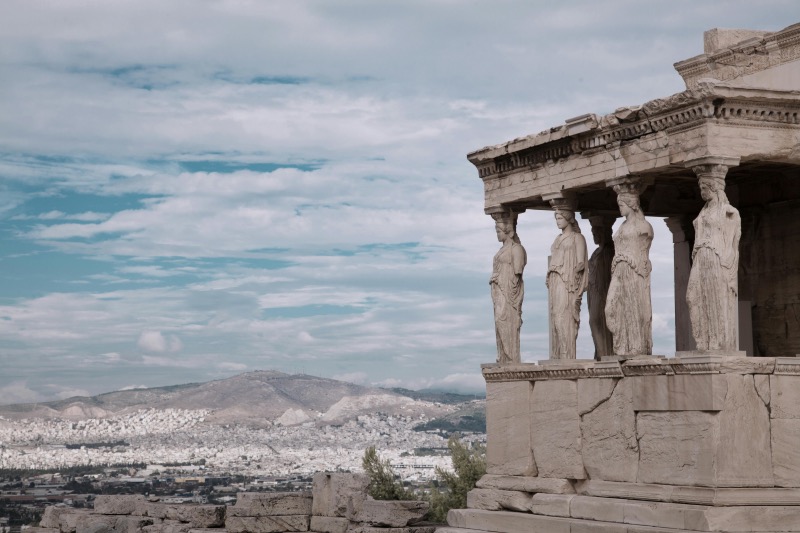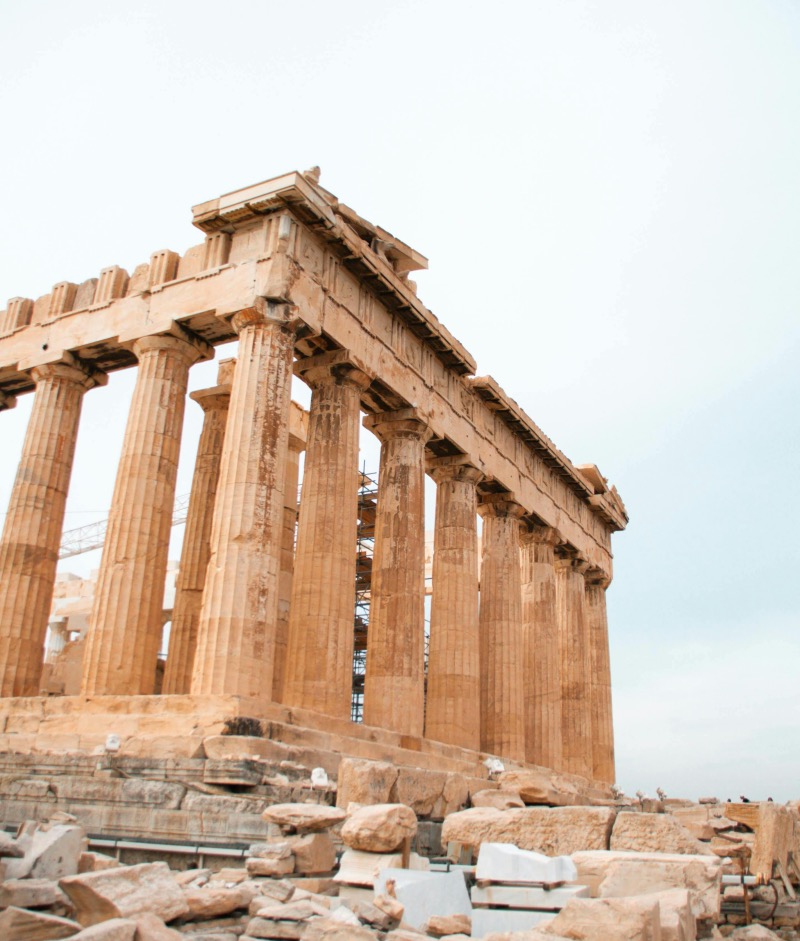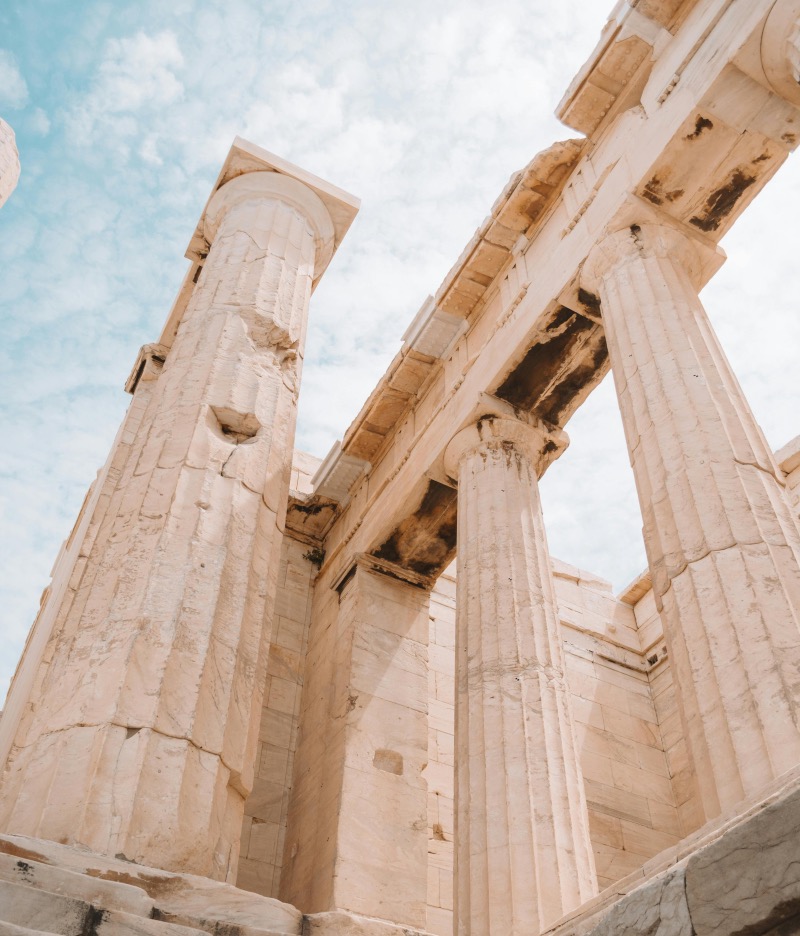
A visit to the Acropolis of Athens is a must for anyone visiting the city. This iconic site is the symbol par excellence of Athens and represents the glory of ancient Greece. In addition to the Acropolis itself, I highly recommend visiting the Acropolis Museum, which offers a comprehensive perspective on the archaeological treasures found at the site.
What the visit to the Acropolis of Athens includes

The Acropolis of Athens is one of the most famous sites in the world and a symbol of Greek civilisation. But what is an acropolis? The term comes from ancient Greek and means ‘high city’ or ‘citadel’. These structures were generally built on hills or high ground for defensive purposes and as sacred sites.
The Acropolis of Athens has been inhabited since Neolithic times, but it was during the 5th century BC, under the leadership of Pericles, that the Acropolis reached its peak. Today, a visit to the Acropolis of Athens allows you to explore some of the most significant monuments of ancient Greece.
Parthenon
The Parthenon, built between 447 and 438 BC, is a Doric temple dedicated to Athena Parthenos, the patron goddess of the city. Designed by Ictinus and Callicrates and decorated by Phidias, the temple represents the pinnacle of classical Greek architecture. The Parthenon not only served as a place of worship, but was also a symbol of Athenian power and culture. Its perfect symmetry and harmonious proportions are considered the embodiment of beauty and balance.
Propylaea
Built between 437 and 432 BC under the supervision of the architect Mnesicles, the Propylaea are the imposing monumental entrance to the Acropolis. Made of Pentelic marble, they feature a combination of Doric and Ionic columns. The Propylaea were not just a simple entrance, but a veritable architectural complex that served as a ceremonial passageway to the sacred heart of the Acropolis.
Erechtheion
Built between 421 and 406 BC, the Erechtheion is known for its caryatids, the statues of women that serve as columns in the southern portico. This asymmetrical Ionic temple is dedicated to Athena and Poseidon and is a unique example of sacred architecture. The original caryatids are now in the Acropolis Museum in Athens and partly in the British Museum in London. The Erechtheion is also famous for its complex architectural plan, due to the need to adapt to the irregular terrain of the Acropolis.
Temple of Athena Nike
This small Ionic temple is located at the southwest corner of the Acropolis. Dedicated to Athena Nike, the goddess of victory, the temple celebrates Athenian military victories and offers a panoramic view of the city. The temple’s decorations are an excellent example of Ionian art.
Theatre of Dionysus
Considered the oldest theatre in the world, the Theatre of Dionysus was built in the 6th century B.C. and is where the works of the great Greek playwrights such as Aeschylus, Sophocles and Euripides were first performed. The theatre could seat up to 17,000 spectators and its semicircular tiers of seats offer exceptional acoustics.
Odeo of Herod Atticus
This Roman stone theatre was built from 161 A.D. by Herod Atticus in memory of his wife Aspasia Annia Regilla. With a capacity of about 5,000 spectators, the theatre is still used today for concerts and performances, especially during the Athens Festival. Its well-preserved structure and exceptional acoustics make it a remarkable example of the Roman influence on Greek culture.
Shrines
In addition to the main temples, the Acropolis hosts several smaller sanctuaries dedicated to different gods and heroes. These sanctuaries include the Altar of Zeus Polieus, the Sanctuary of Dionysus and that of Asclepius, which add further depth to the understanding of the religious role of the Acropolis.

The Acropolis Museum in Athens
I find the Acropolis Museum complementary to a visit to the archaeological site. Indeed, this modern museum, located at the foot of the Acropolis, houses many of the artefacts found in the area, including the Parthenon friezes, the caryatids of the Erechtheion and the friezes of the Temple of Athena Nike.
The ticket for the museum is separate from the archaeological area, but I really recommend you visit it to get a complete view of the context. There is the possibility of buying the tickets in one go with this option, which I recommend. Queues at the museum ticket office can be very long, so it is preferable to buy tickets for the Acropolis museum in advance to avoid unnerving waits.
How to get to the Acropolis
The Acropolis is located in the heart of Athens and to reach it, in the final part, you have to walk. So be prepared for a climb and wear comfortable shoes. In addition, temperatures can get very hot during the summer, so it is advisable to bring water, a hat and sunscreen with you, but try to avoid the hottest hours of the day for your visit, otherwise you won’t enjoy it to the full.
To make the most of your visit and discover more of Athens’ attractions, consider buying a tourist pass that includes access to the Acropolis, the Acropolis Museum and many other sites in the city.

